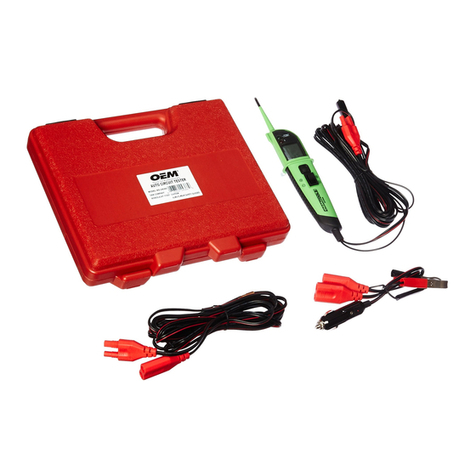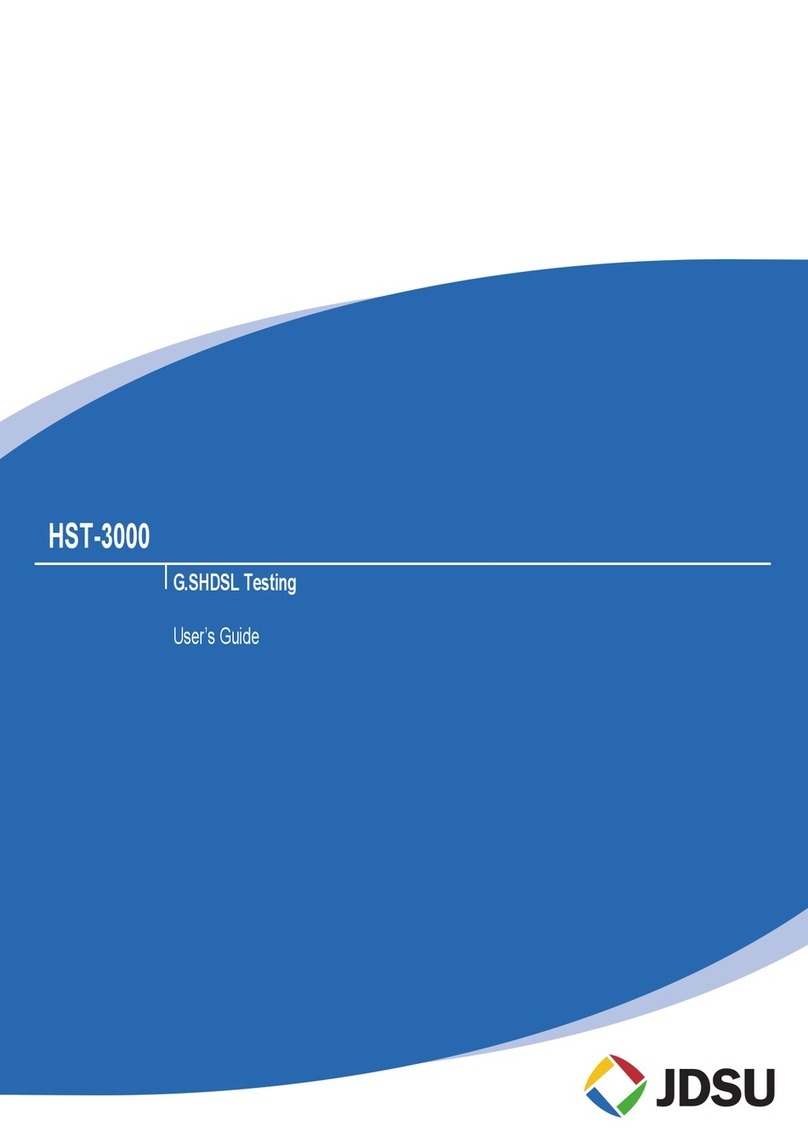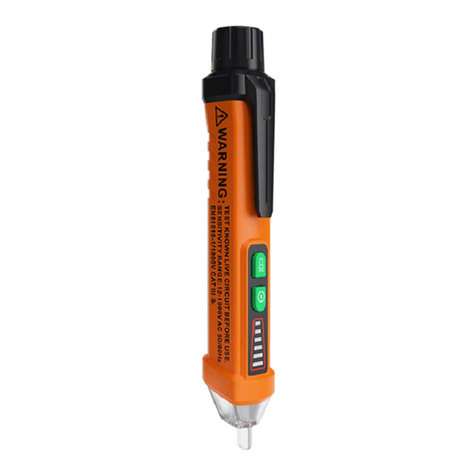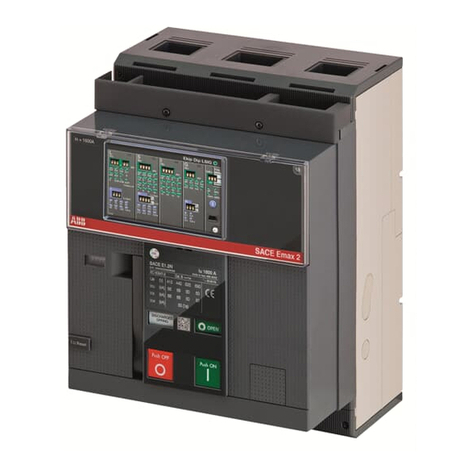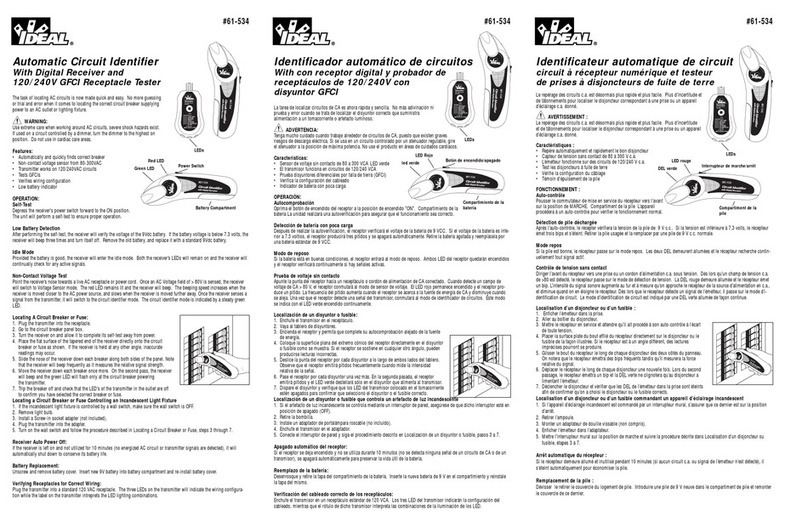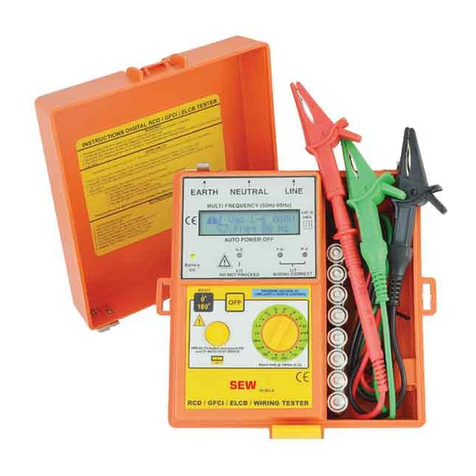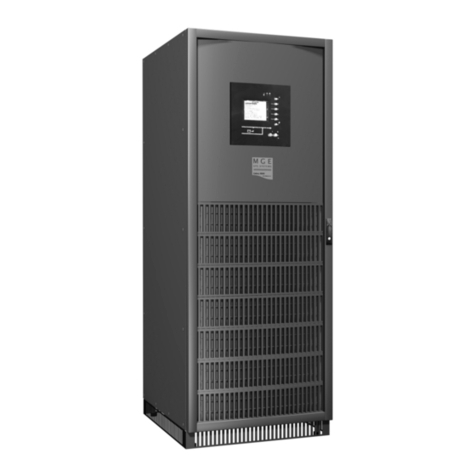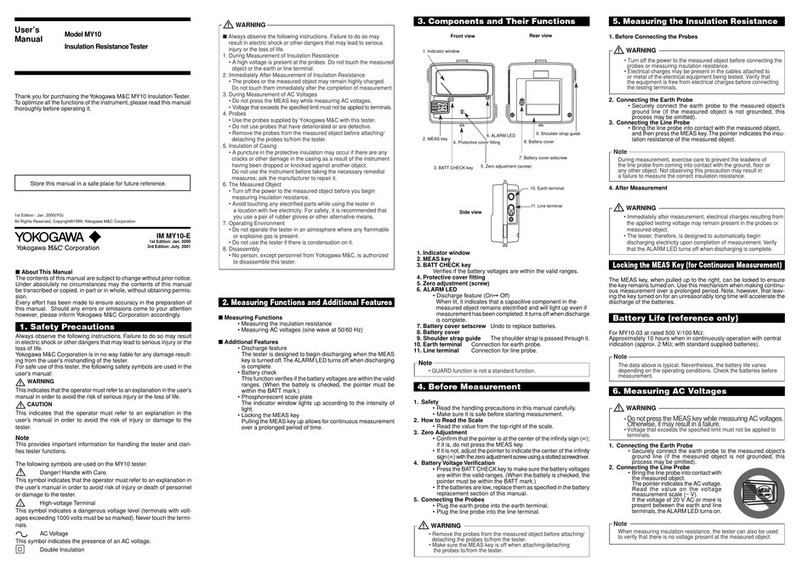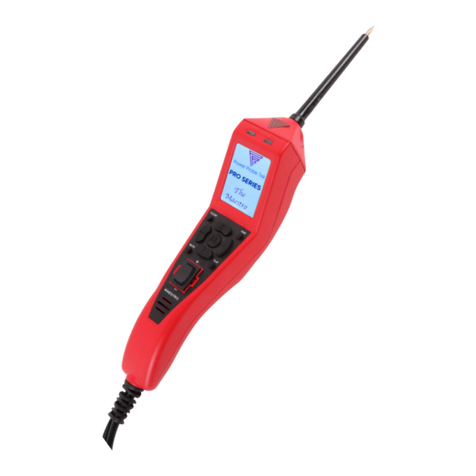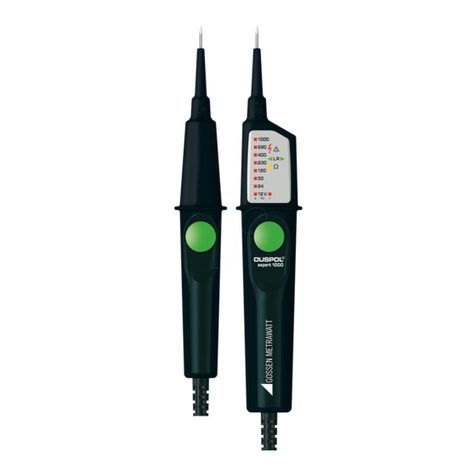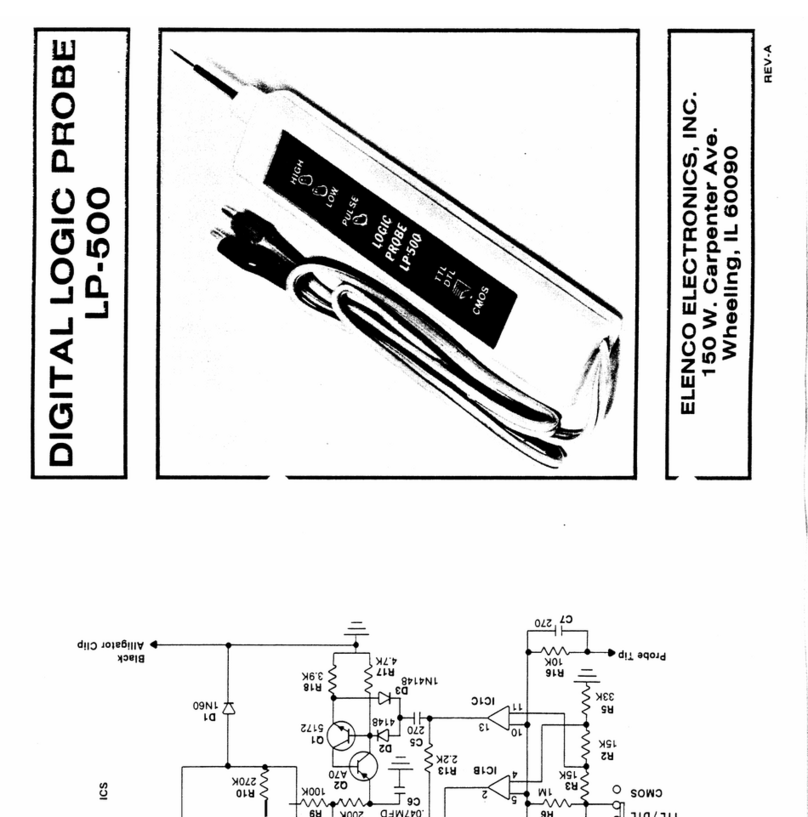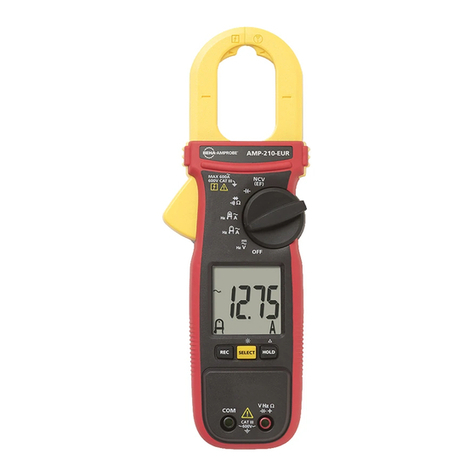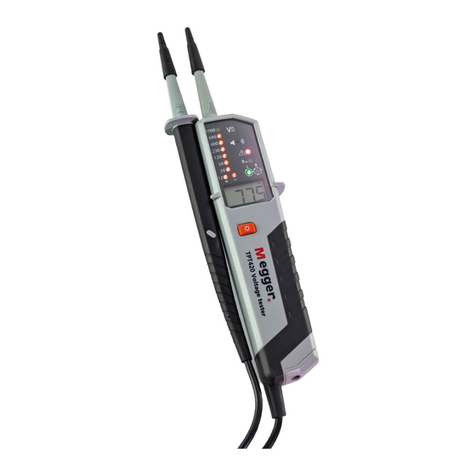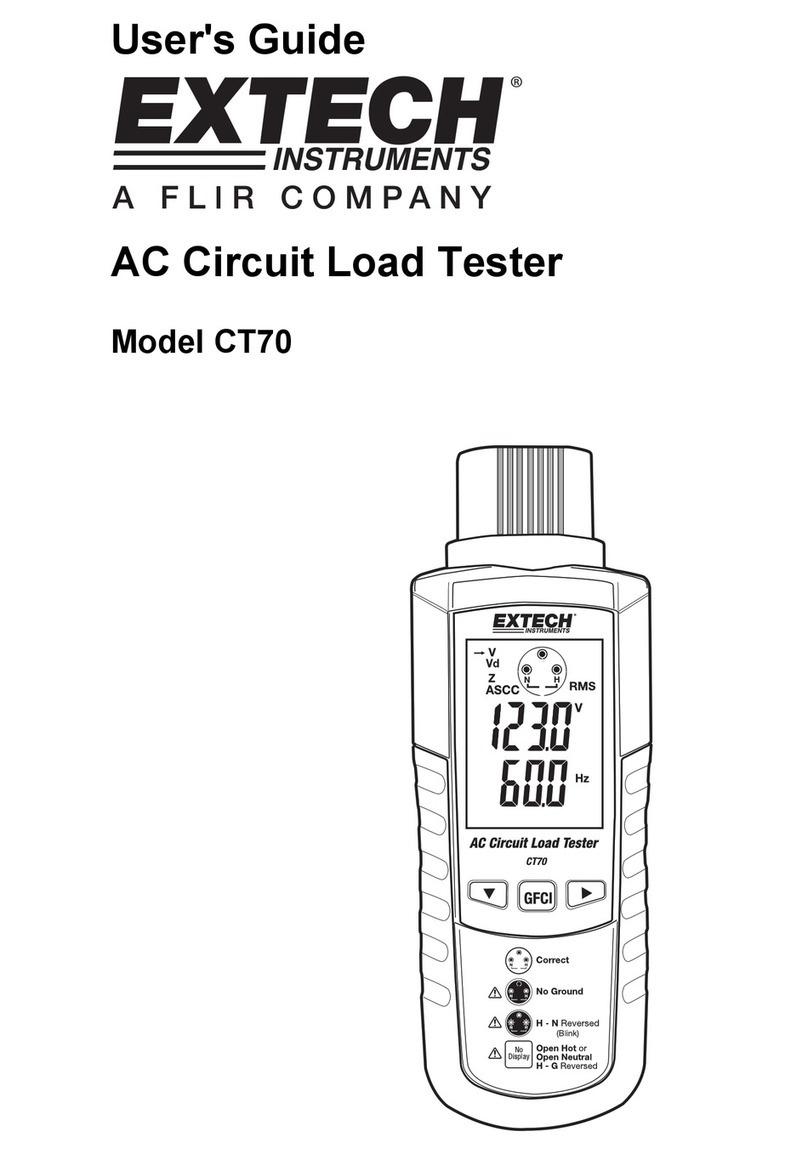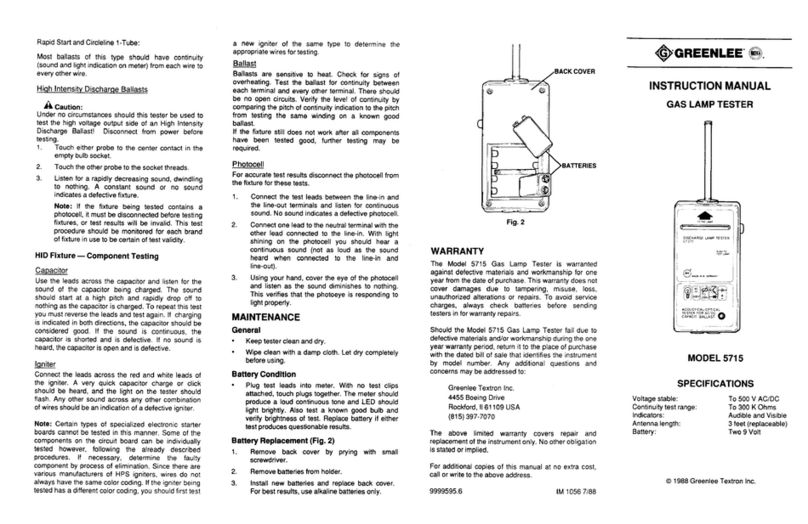
Introduction
Thank you for purchasing the HIOKI “Model 3481-20 VOLTAGE DETEC-
TOR.” To obtain maximum performance from the instrument, please read
this manual first, and keep it handy for future reference.
This non-contact type of voltage detector unit enables the hot-line state of
AC voltage to be checked through the wire or cable covering
.
When you receive the instrument, inspect it carefully to ensure that no dam-
age occurred during shipping. If damage is evident, or if it fails to operate ac-
cording to the specifications, contact your dealer or Hioki representative.
• To clean the instrument, wipe it gently with a soft cloth moistened
with water or mild detergent. Never use solvents such as benzene,
alcohol, acetone, ether, ketones, thinners or gasoline, as they can
deform and discolor the case.
• If the instrument seems to be malfunctioning, confirm that the batter-
ies are not discharged, before contacting your dealer or Hioki repre-
sentative.
This manual contains information and warnings essential for safe operation
of the instrument and for maintaining it in safe operating condition. Before
using it, be sure to carefully read the following safety precautions.
Safety Symbol
The following symbols in this manual indicate the relative importance of cau-
tions and warnings.
Symbols for Various Standards
Measurement categories
This instrument complies with CAT IV (600 V) safety requirements.
To ensure safe operation of measurement instruments, IEC 61010
establishes safety standards for various electrical environments,
categorized as CAT II to CAT IV, and called measurement catego-
ries. These are defined as follows.
CAT II: Primary electrical circuits in equipment connected to an AC
electrical outlet by a power cord (portable tools, household appli-
ances, etc.)
CAT III:Primary electrical circuits of heavy equipment (fixed instal-
lations) connected directly to the distribution panel, and feeders
from the distribution panel to outlets.
CAT IV: The circuit from the service drop to the service entrance,
and to the power meter and primary overcurrent protection device
(distribution panel).
Using a measurement
instrument in an environ-
ment designated with a
higher-numbered cate-
gory than that for which
the instrument is rated
could result in a severe
accident, and must be
carefully avoided. Use of a measurement instrument that is not
CAT-rated in CAT II to CAT IV measurement applications could
result in a severe accident, and must be carefully avoided.
Follow these precautions to ensure safe operation and to obtain the
full benefits of the various functions.
The static-induction voltage detection method using static coupling
lets you verify the hot-line state of a wire.
Examples of inapplicable circuits
Performance Check and Voltage Detection
Ideal for 100 V to 120 V installations.
Model 3481-20
Visual and audible
voltage detection indication Auto Power OFF
Sensitivity-adjustable
Sept. 2020 Revised edition 1
3481D980-01 20-09H
3481-20
VOLTAGE
DETECTOR
Instruction Manual
EN
Overview
Initial Inspection
Maintenance and Service
Safety
This instrument is designed to comply with IEC 61010
Safety Standards, and has been thoroughly tested for
safety prior to shipment. However, mishandling during
use could result in injury or death, as well as damage to
the instrument. Be certain that you understand the
instructions and precautions in the manual before use.
We disclaim any responsibility for accidents or injuries
not resulting directly from instrument defects.
In the manual, the symbol indicates particularly important informa-
tion that the user should read before using the instrument.
The symbol printed on the instrument indicates that the user
should refer to a corresponding topic in the manual (marked with the
symbol) before using the relevant function.
Indicates a double-insulated device.
Indicates AC (Alternating Current).
Indicates DC (Direct Current).
Indicates that incorrect operation presents an extreme hazard
that could result in serious injury or death to the user.
Indicates that incorrect operation presents a significant hazard
that could result in serious injury or death to the user.
Indicates that incorrect operation presents a possibility of injury
to the user or damage to the device.
Indicates advisory items related to performance or correct oper-
ation of the instrument.
Indicates the Waste Electrical and Electronic Equipment Directive
(WEEE Directive) in EU member states.
Indicates that the product conforms to regulations set out by the EC
Directive.
Usage Notes
This instrument is measured on a live line. To avoid elec-
tric shock when measuring live lines, wear appropriate
protective gear, such as insulated rubber gloves, boots
and a safety helmet.
• This instrument is designed for use indoors. It can be operated at
temperatures between 0°C and 40°C without degrading safety.
• This instrument is not designed to be entirely water- or dust-proof.
Do not use it in an especially dusty environment, nor where it might
be splashed with liquid. This may cause damage.
• To avoid damage to the instrument, protect it from physical shock
when transporting and handling. Be especially careful to avoid
physical shock from dropping.
• Do not look directly into the penlight nor shine the light at another
person's eye. Doing so may cause damage to the eye.
Measuring Principal
Operating volt-
age range
40 V to 600 V AC
(When placed into contact with a 2 mm2 insulated wire
equivalent to 600 V polyvinyl chloride insulated wires)
Maximum sensitivity adjustable range: 4 V to 80 V
The operating voltage indicates a line-to-earth voltage of
the grounded circuit.
Operating fre-
quency range 50 Hz/ 60 Hz
Measuring principle diagram
I
V
C1C2
C3
R1
R2
* Although a detected current will flow to the ground through your body, the
current, which is less than 1 μA, will not adversely affect you.
Inapplicable circuit Example Cause
Grounded wire
• Grounding phase of
single-phase circuit
• Grounding phase of
3-phase circuit
• Grounded neutral wire
• Grounding wire
Voltage is less than
operating voltage range.
Shielded wire shielded wire Shield layer prevents signal
from being detected.
Non-grounded
power system
• Floating circuit
• Transformer used in non-
grounded circuit
Line-to-earth voltage is
unstable.
DC power system • Battery-operated circuit
•PVpanel
Static coupling point cannot
flow DC.
Even if you place the instrument into contact with an inapplicable circuit,
the instrument may detect AC voltage of adjacent cables/wires, being
activated.
Check a voltage using a voltmeter when in doubt.
Detection
The maximum rated voltage between input terminals and
ground is 600 V AC. Attempting to measure voltages
exceeding 600 V with respect to ground could damage
the instrument and result in personal injury.
• The white LED indicates battery consumption but is not a guarantee
of the performance of the instrument. Be sure to check its perfor-
mance using a known power source (e.g., AC outlet) prior to use.
• The instrument voltage detector works using a live AC circuit. It will
not work using an earthed wire or neutral point. If there are several
lines, such as 2-phase wires and 3-phase wires, perform voltage
detection on each line separately.
• The instrument cannot perform voltage detection on a shielded wire.
(See the below figure.)
• Be sure to grip the instrument firmly during measurement. But, do
not touch the portion beyond the barrier. It will not produce any
detection.
• Make sure the detecting element properly contacts the object to be
measured. (See the below figure.)
Detector Body
Object under test
Detecting
plate
Electrode
Ground
Equivalent circuit diagram
R2
R1
V
C1
C2
C3
×○
Voltage detection is not
performed properly.
Position the detecting element so that
it is parallel to the object.
